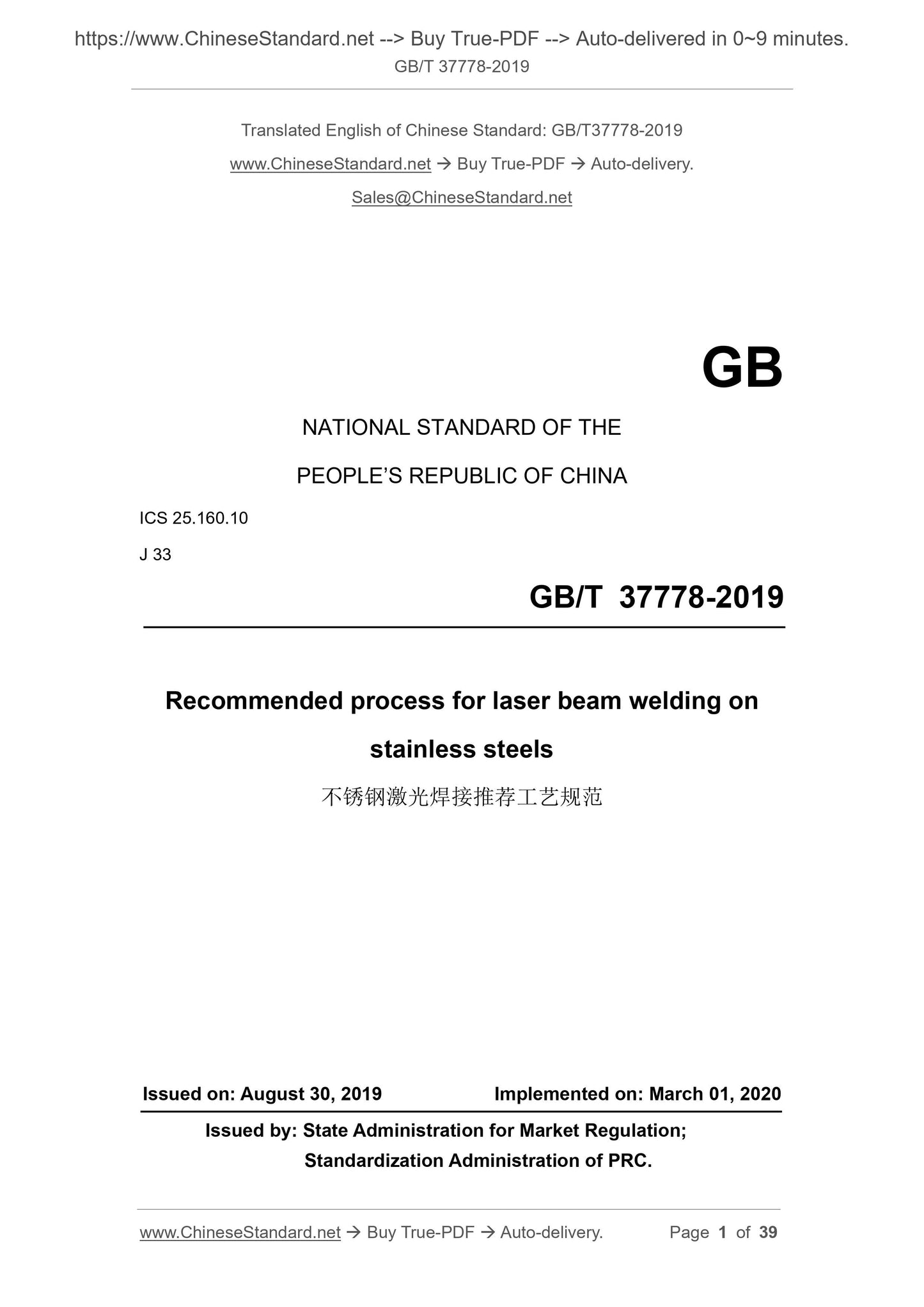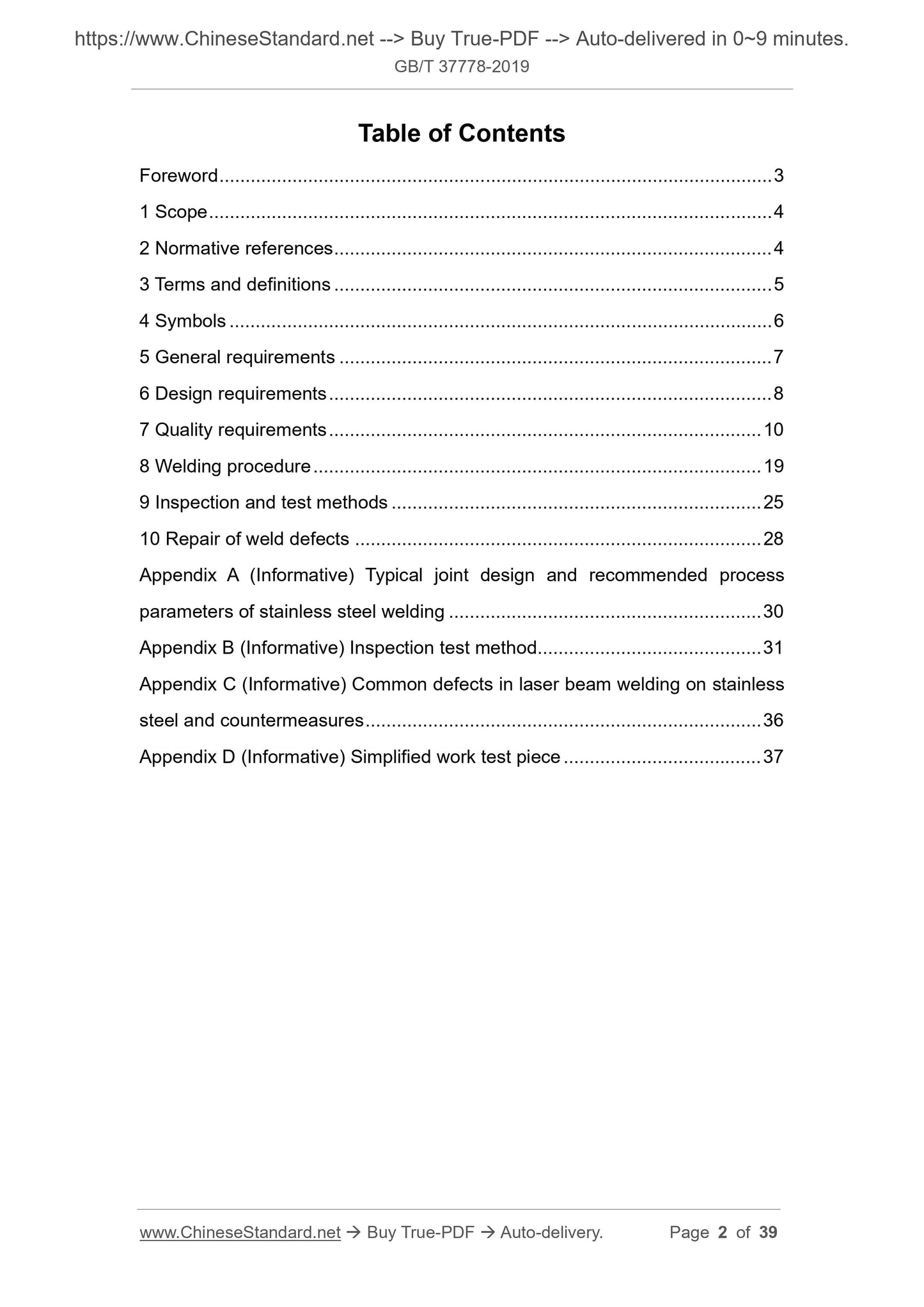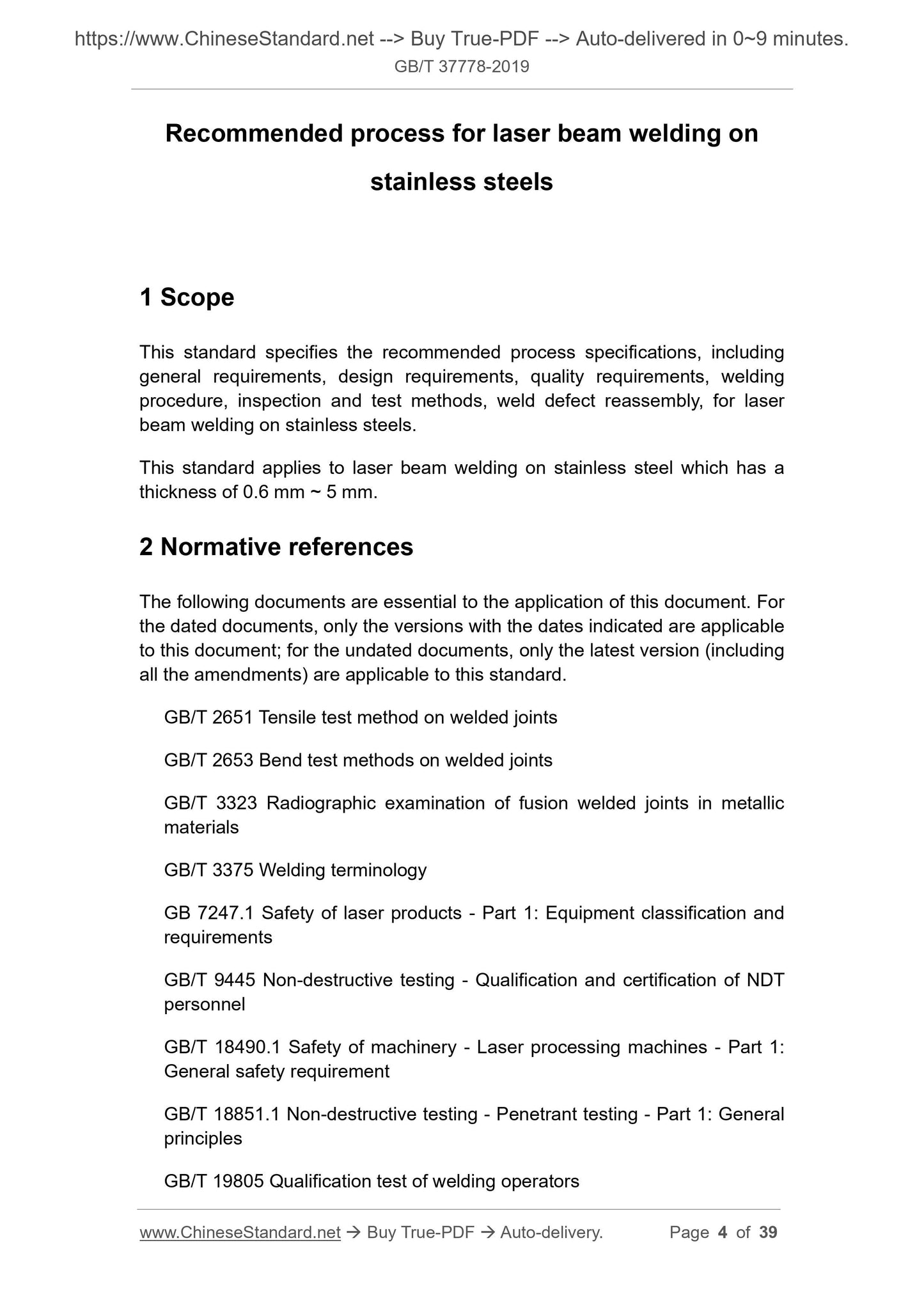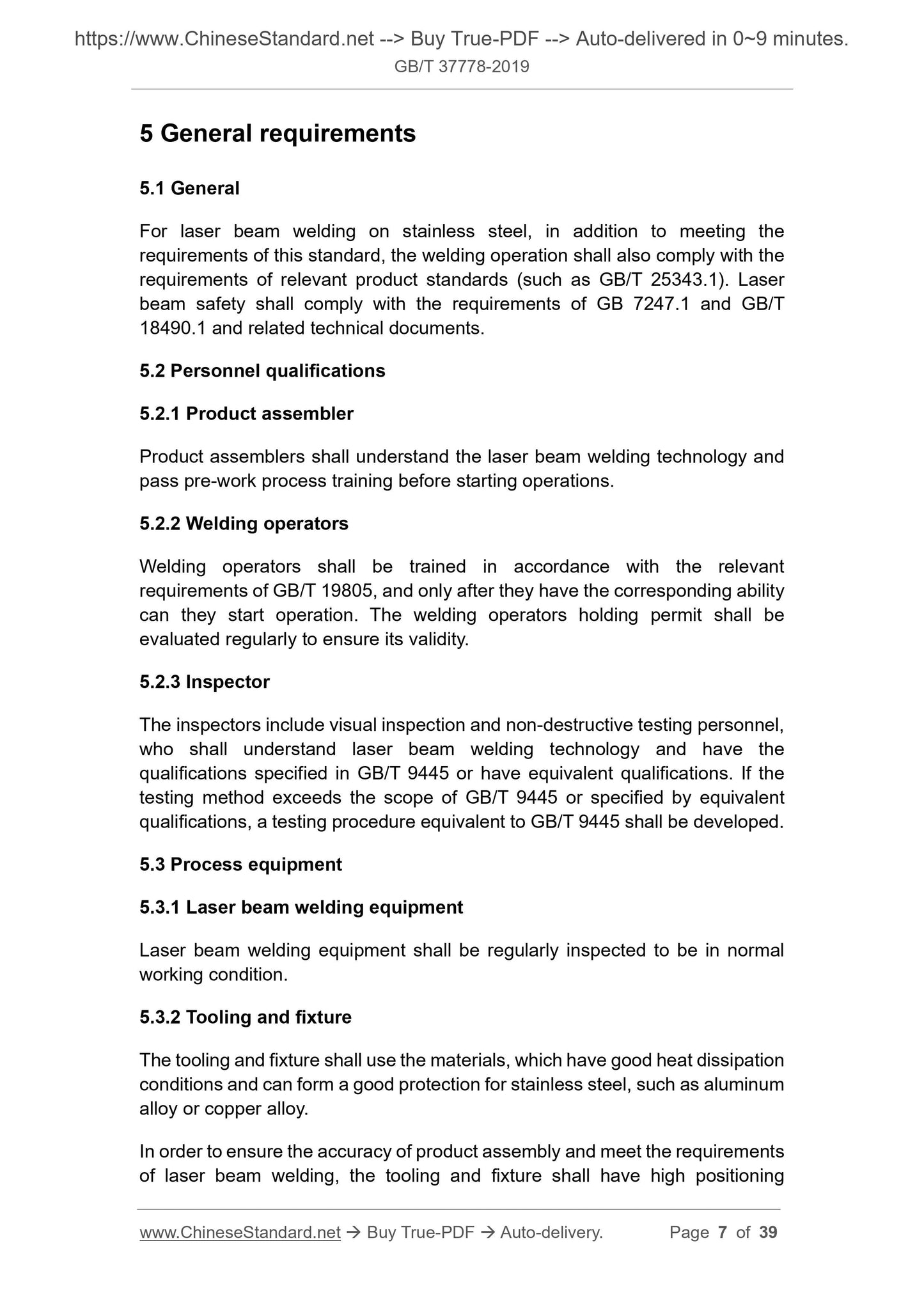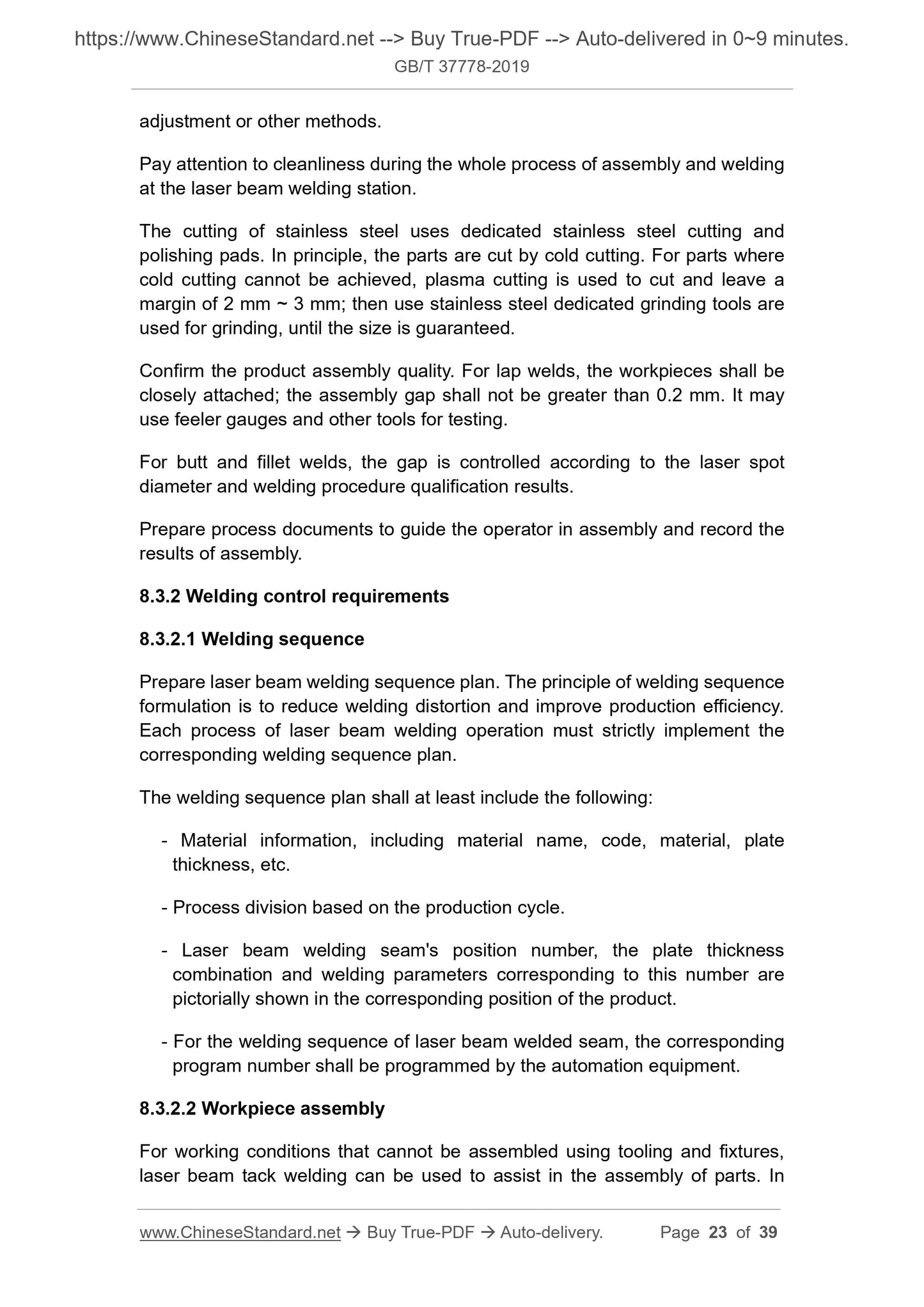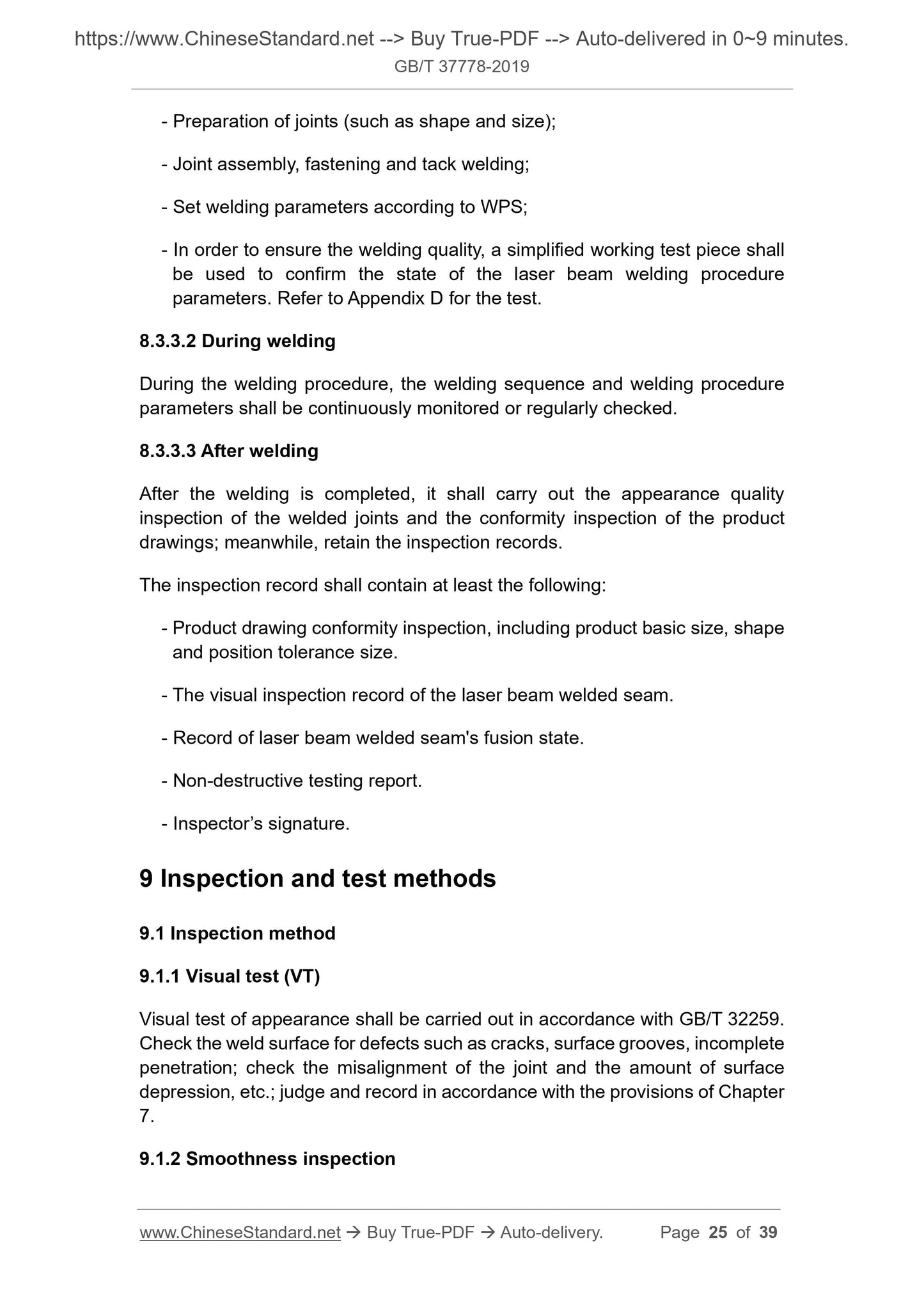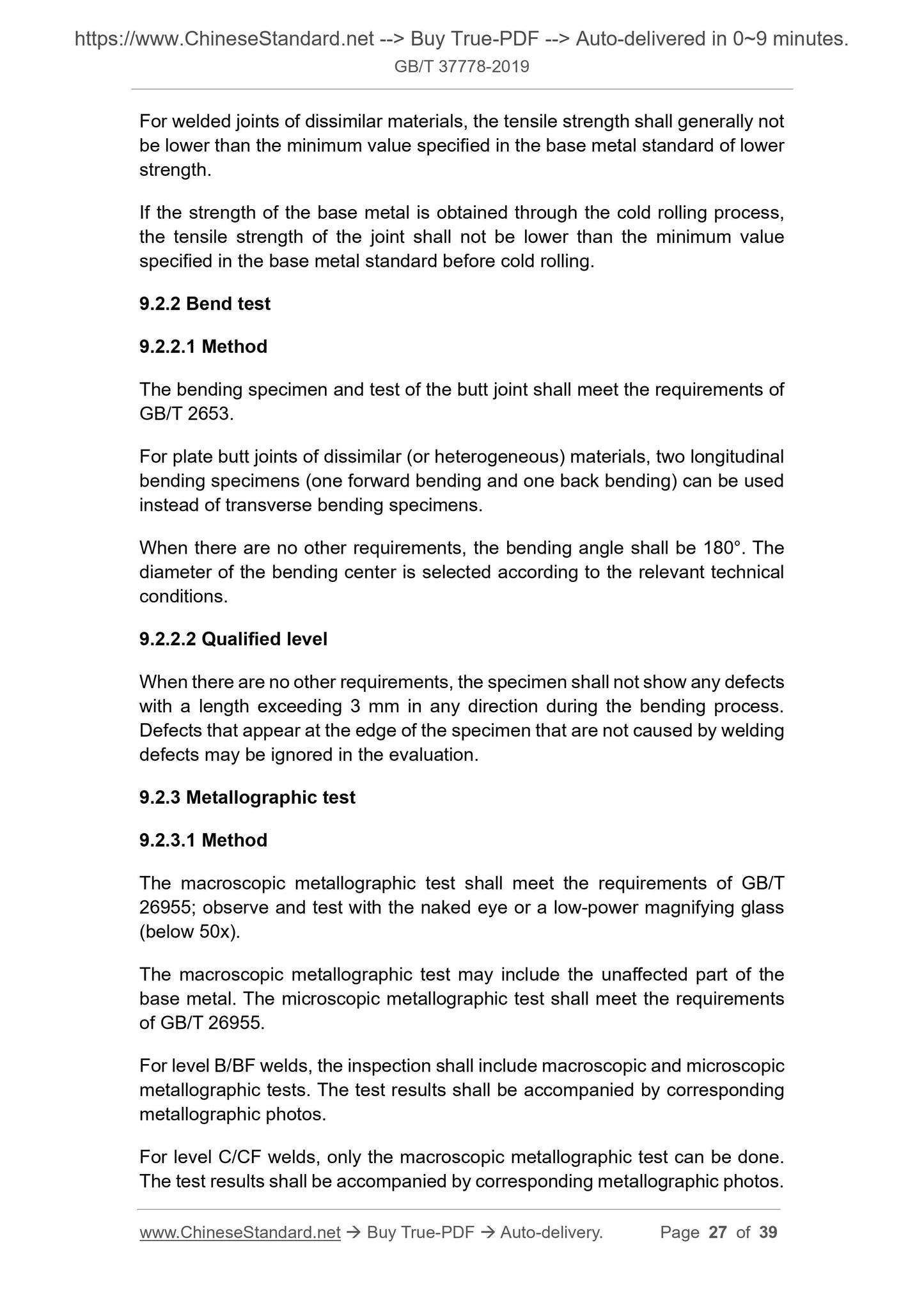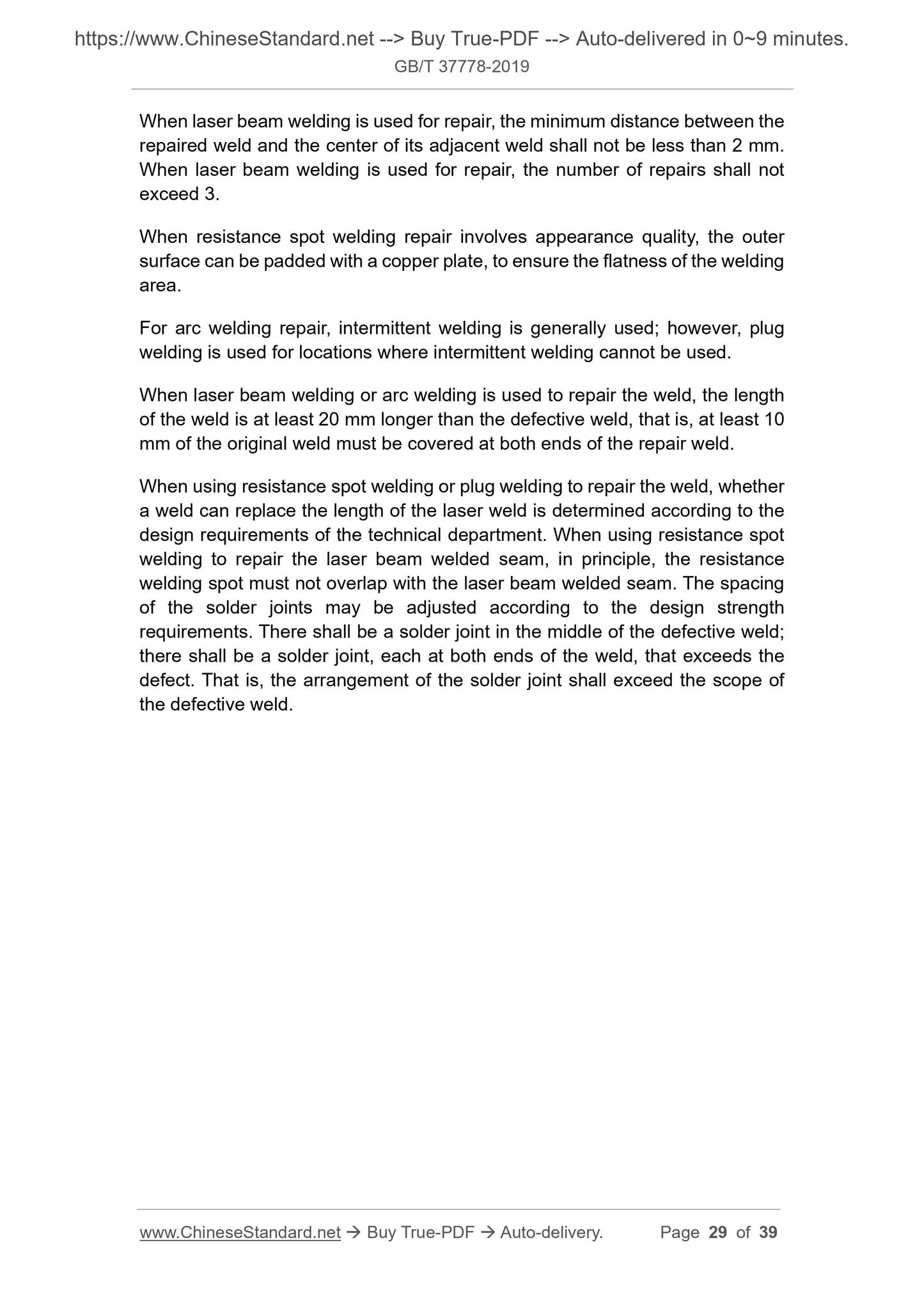1
/
of
8
www.ChineseStandard.us -- Field Test Asia Pte. Ltd.
GB/T 37778-2019 English PDF (GB/T37778-2019)
GB/T 37778-2019 English PDF (GB/T37778-2019)
Regular price
$500.00
Regular price
Sale price
$500.00
Unit price
/
per
Shipping calculated at checkout.
Couldn't load pickup availability
GB/T 37778-2019: Recommended process for laser beam welding on stainless steels
Delivery: 9 seconds. Download (and Email) true-PDF + Invoice.Get Quotation: Click GB/T 37778-2019 (Self-service in 1-minute)
Newer / historical versions: GB/T 37778-2019
Preview True-PDF
Scope
This standard specifies the recommended process specifications, includinggeneral requirements, design requirements, quality requirements, welding
procedure, inspection and test methods, weld defect reassembly, for laser
beam welding on stainless steels.
This standard applies to laser beam welding on stainless steel which has a
thickness of 0.6 mm ~ 5 mm.
Basic Data
| Standard ID | GB/T 37778-2019 (GB/T37778-2019) |
| Description (Translated English) | Recommended process for laser beam welding on stainless steels |
| Sector / Industry | National Standard (Recommended) |
| Classification of Chinese Standard | J33 |
| Classification of International Standard | 25.160.10 |
| Word Count Estimation | 34,354 |
| Date of Issue | 2019-08-30 |
| Date of Implementation | 2020-03-01 |
| Issuing agency(ies) | State Administration for Market Regulation, China National Standardization Administration |
Share
